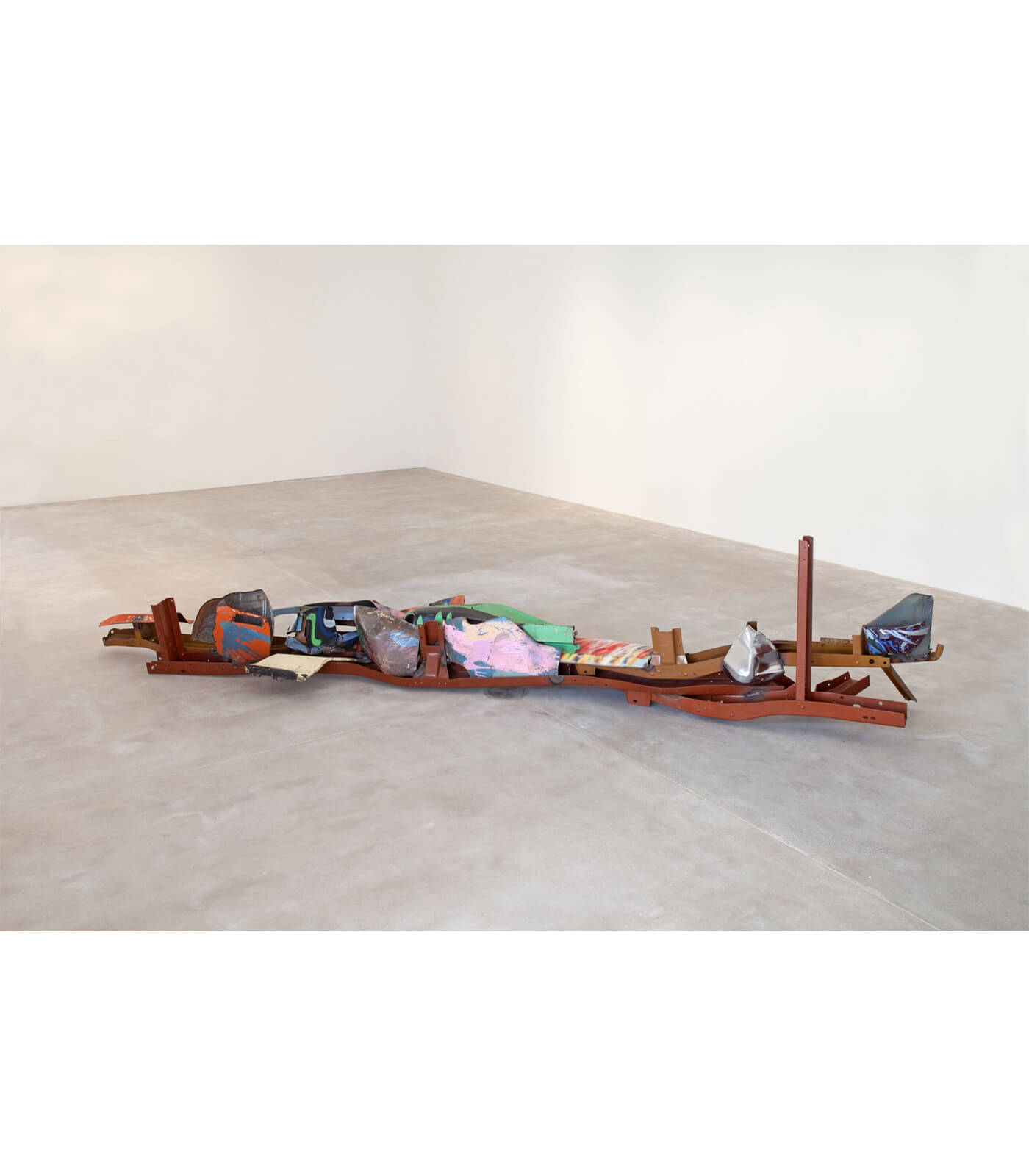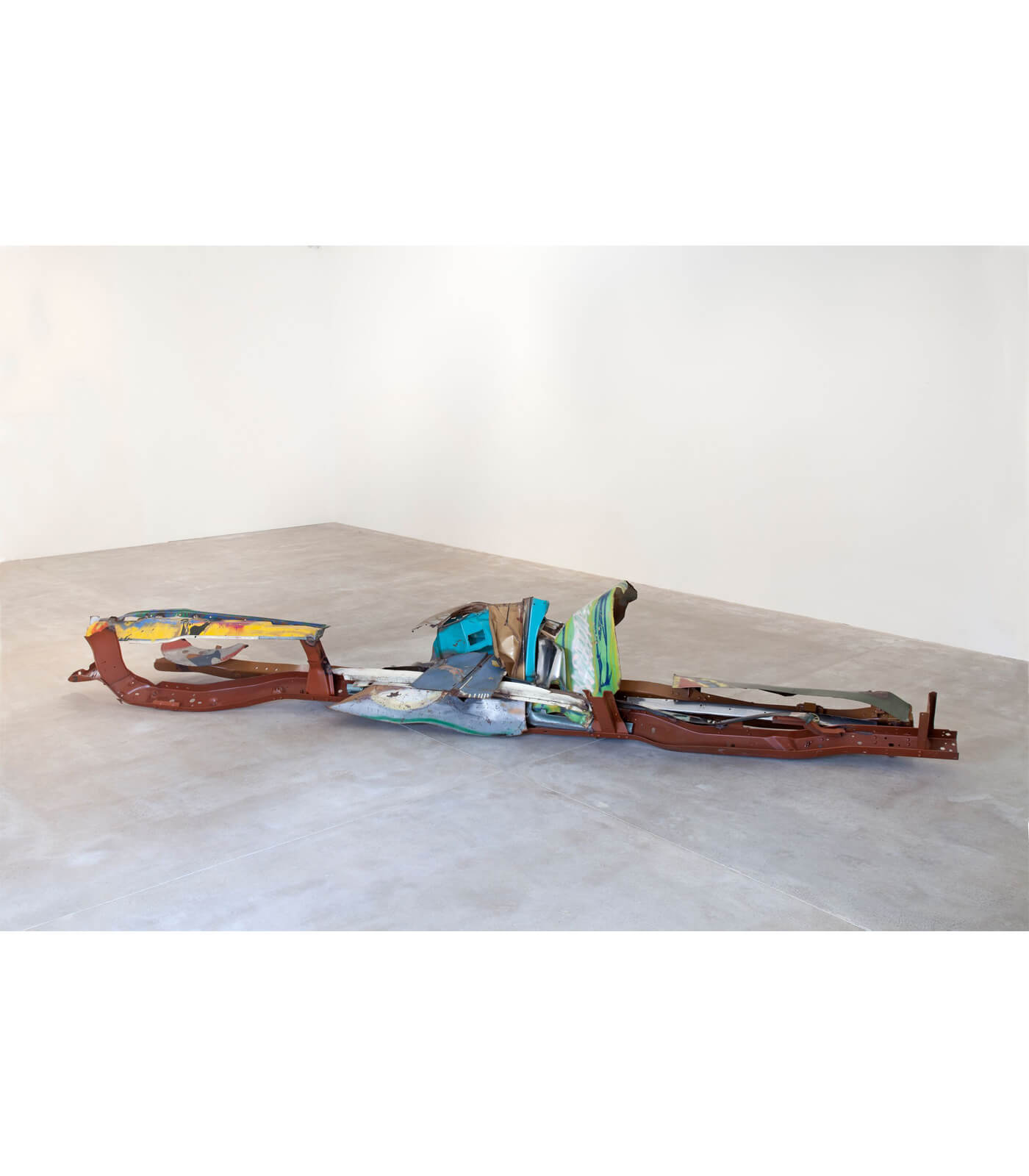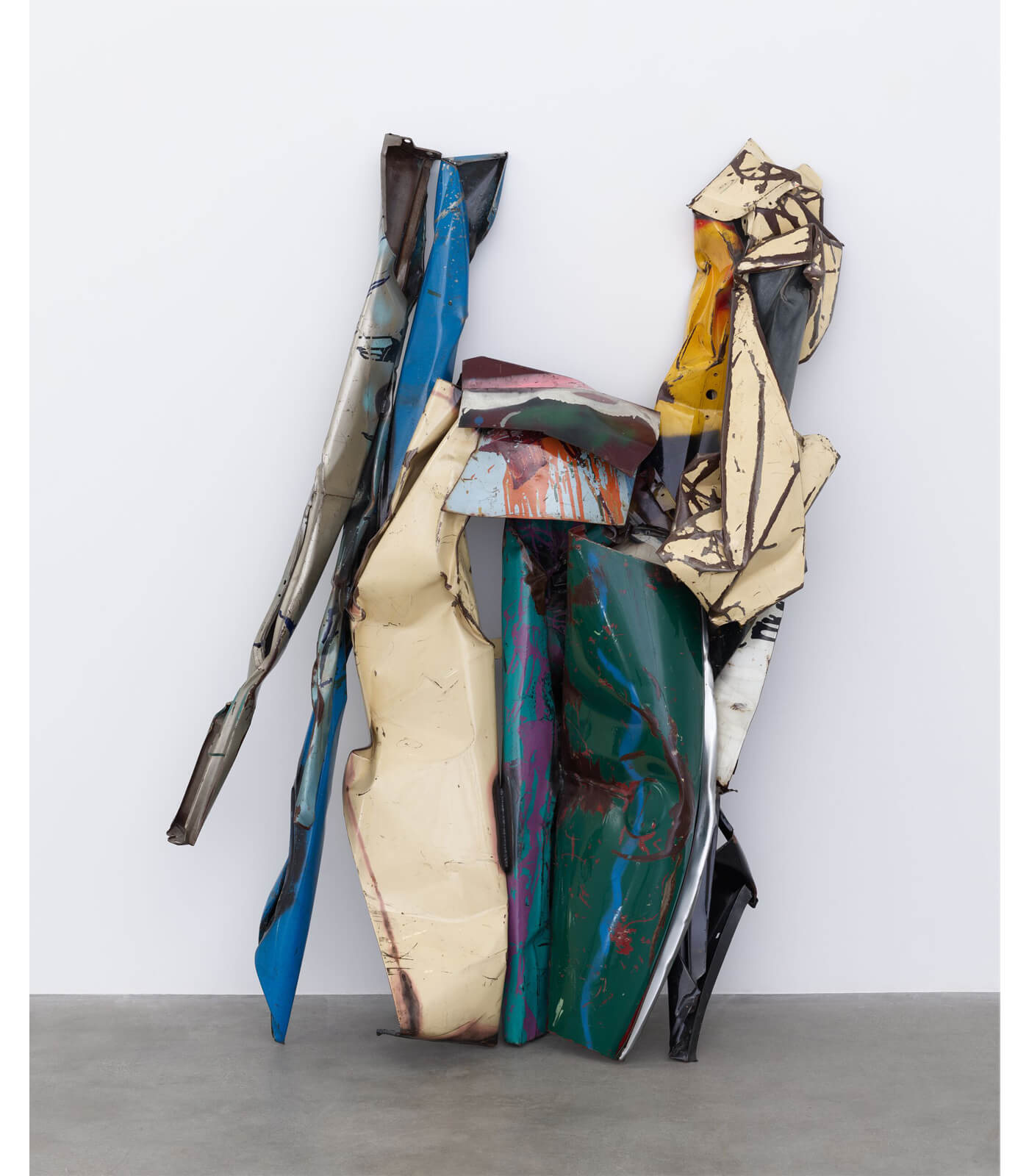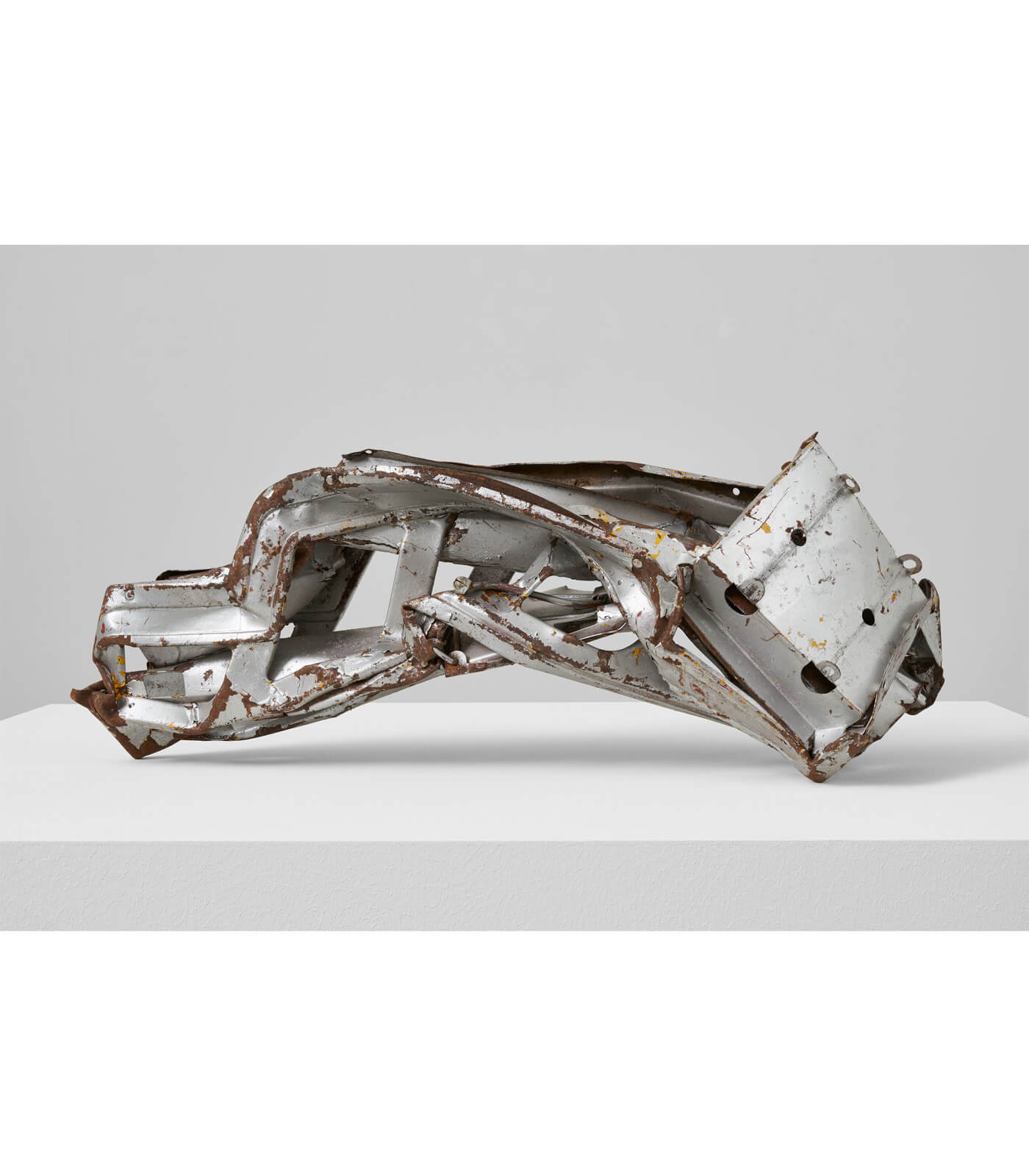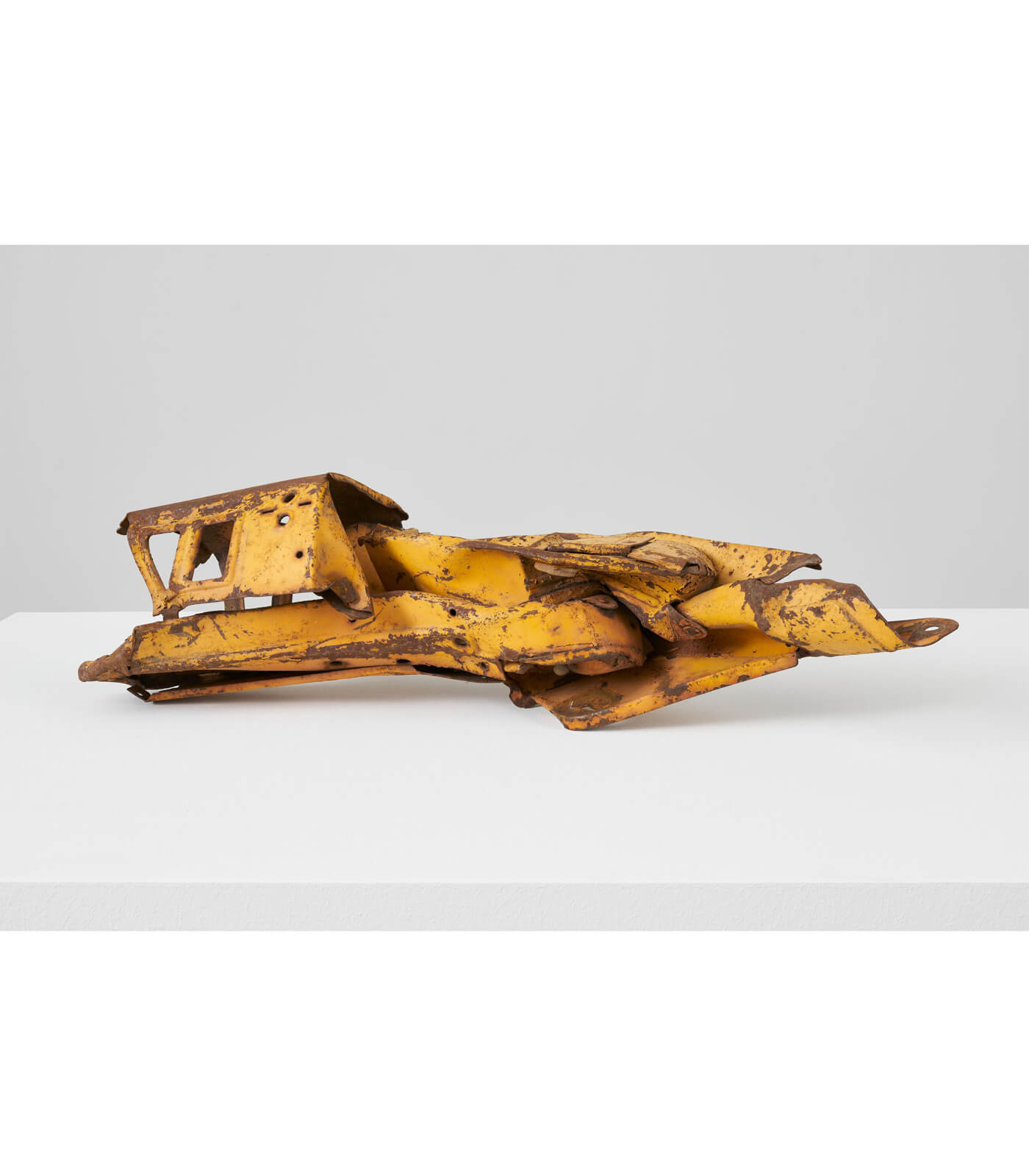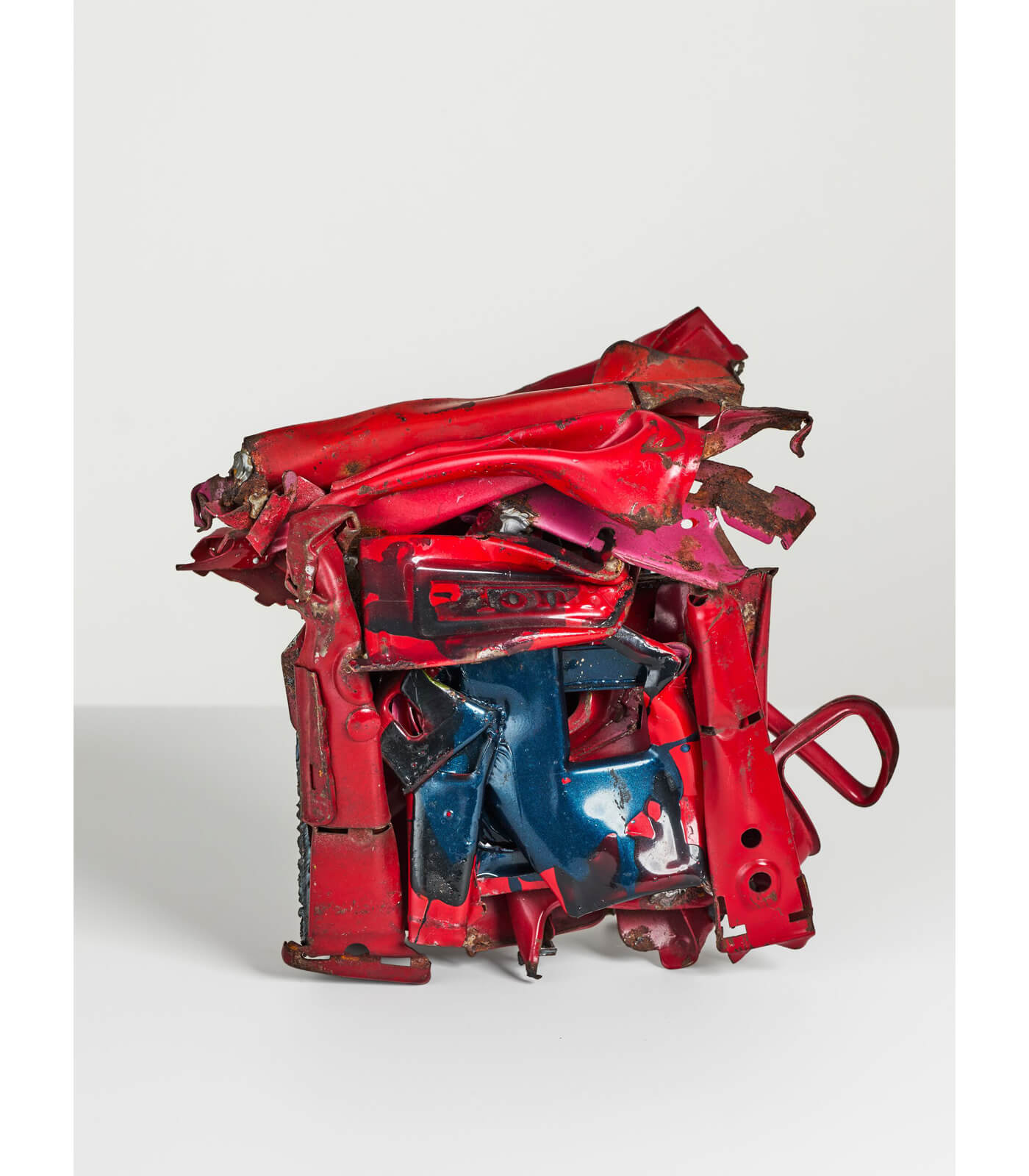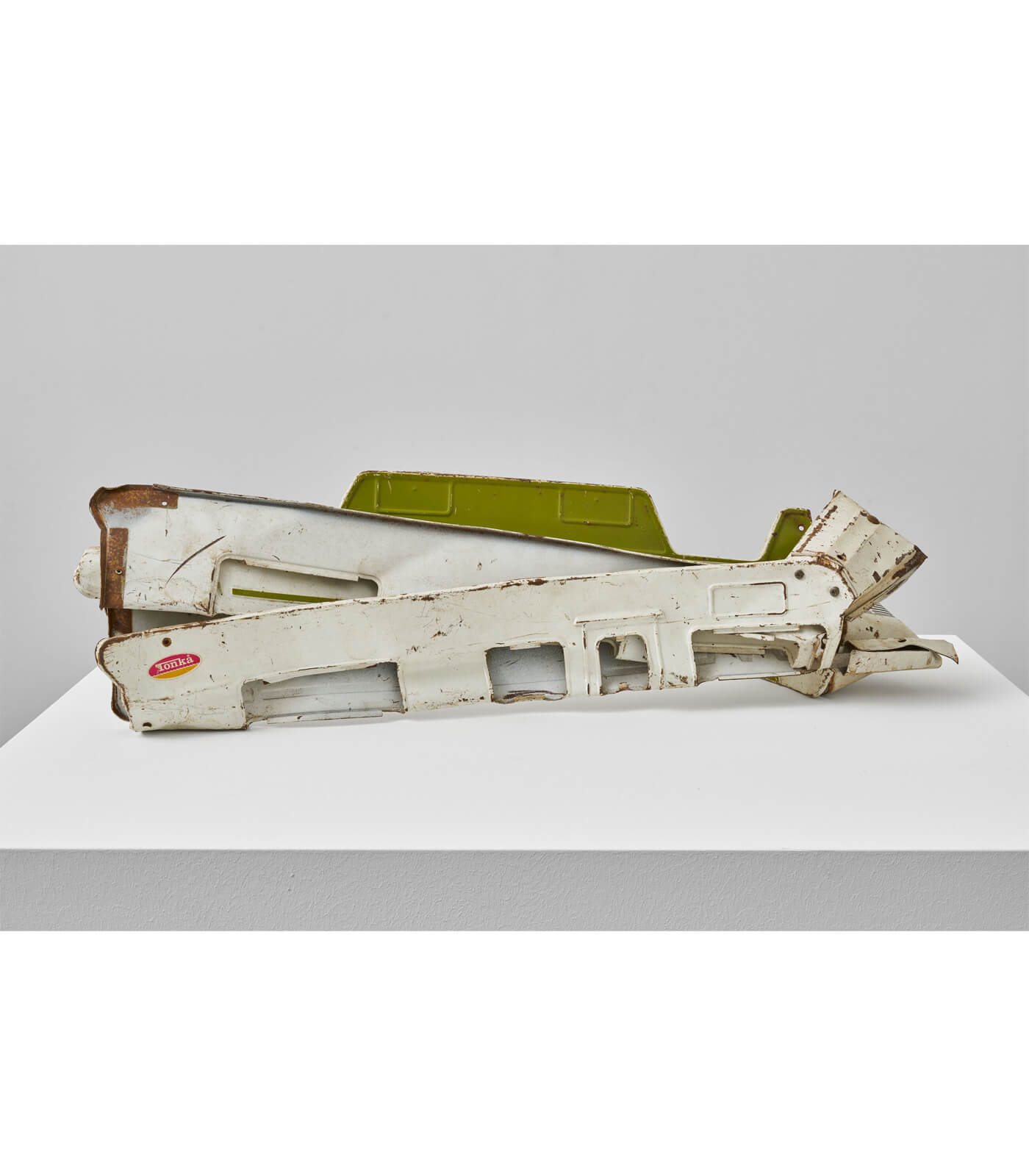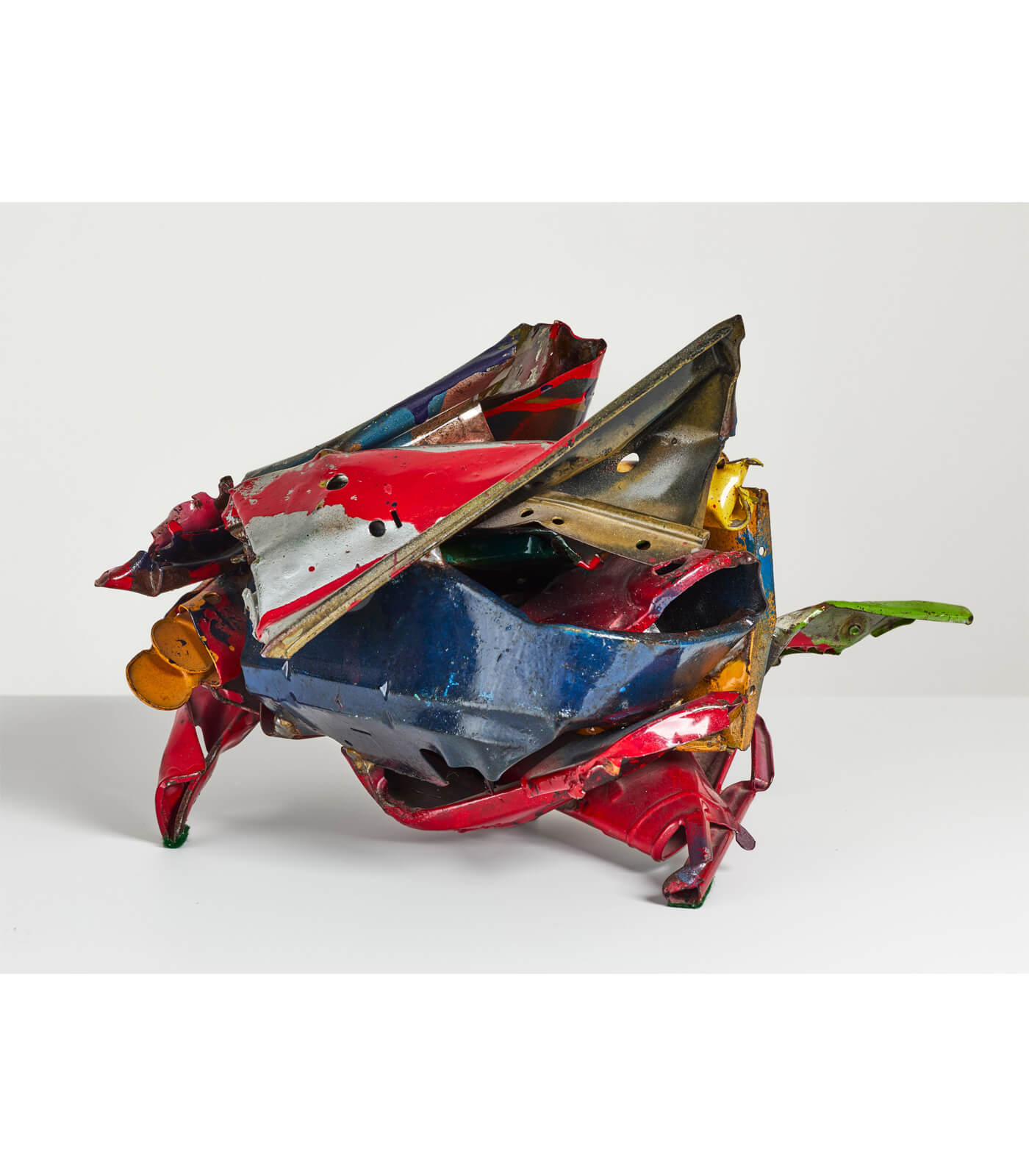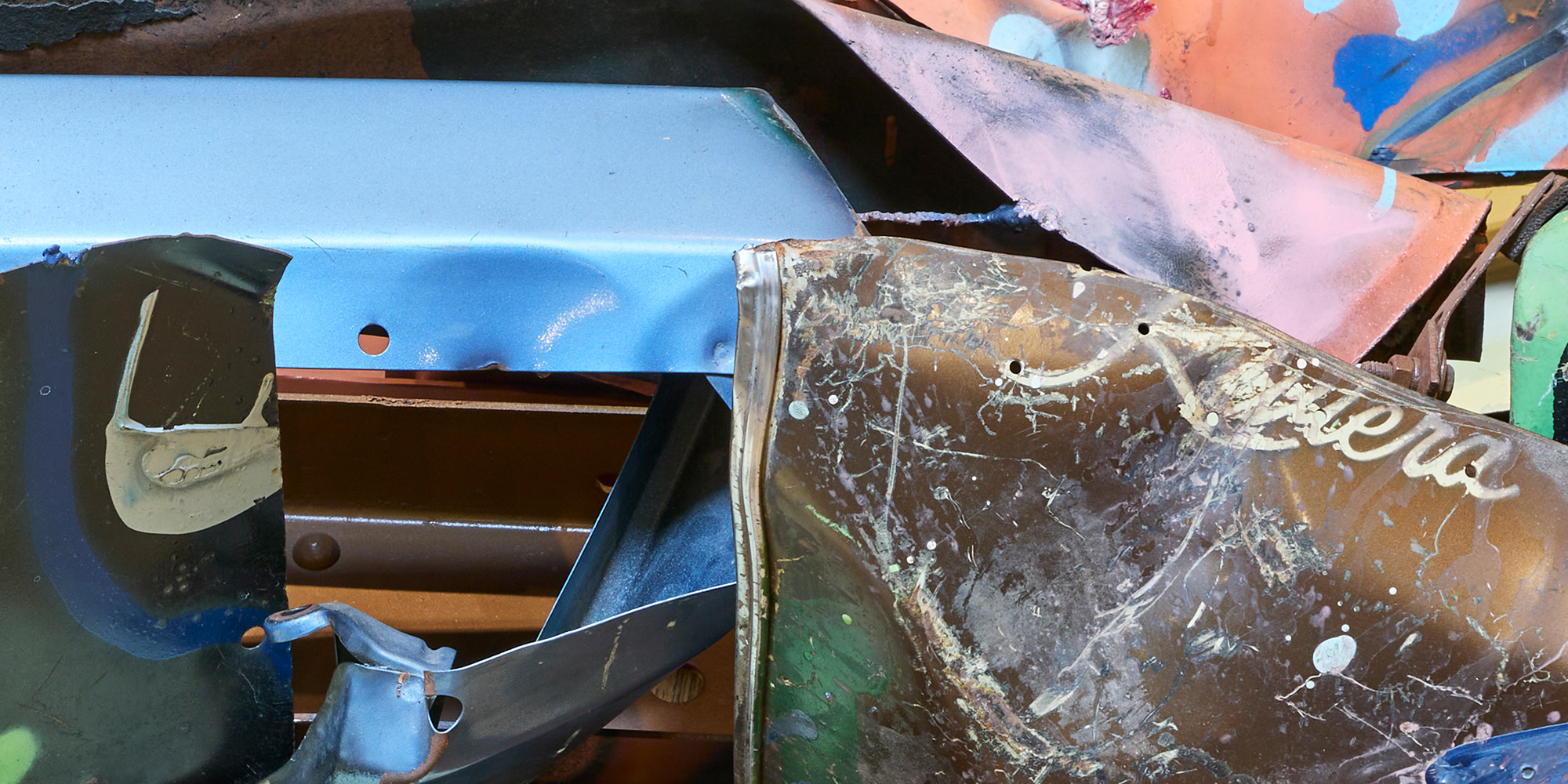
John Chamberlain
The Poetics of Scale
10 May – 2 September 2023
Monaco
This exhibition pairs John Chamberlain’s early poetry from his year at Black Mountain College with his Gondolas and Tonks from the 1980s, epitomizing the artist’s poetic approach to language, materials and scale.
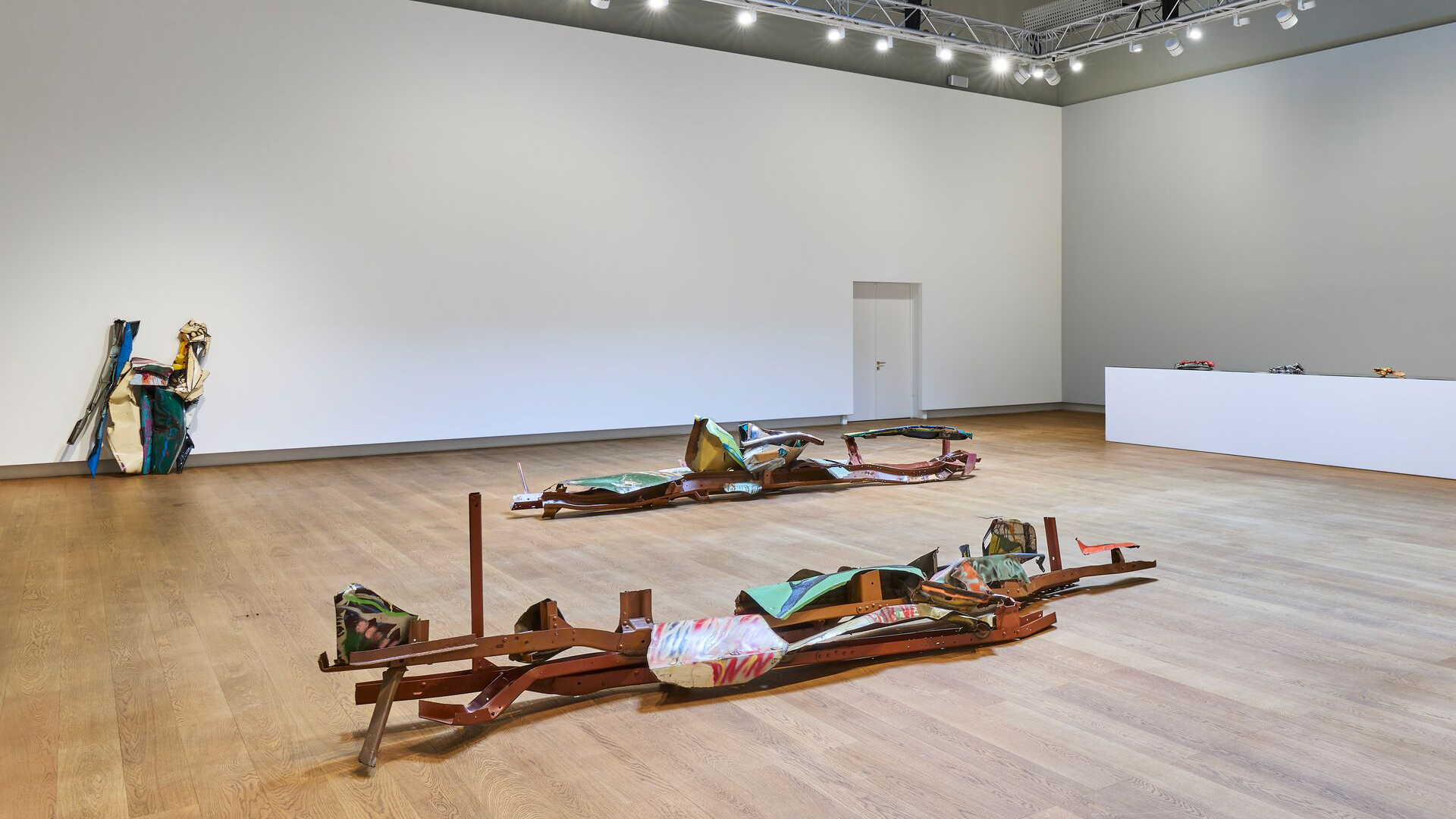
Hauser & Wirth Monaco’s exhibition will be the first time Chamberlain’s poetry will be shown publicly, illuminating a sensitive and little-known aspect of his practice produced at Black Mountain College in the 1950s. This interlude had a profound impact on the artist—he would later state, ‘My teachers were Kline, de Kooning, Charles Olson.’ Chamberlain would later become known for the creativity and poetry of his titles, which, like his sculptures, were assembled based on ‘fit’. He wrote words on cards, trying different combinations to create beautiful compositions.
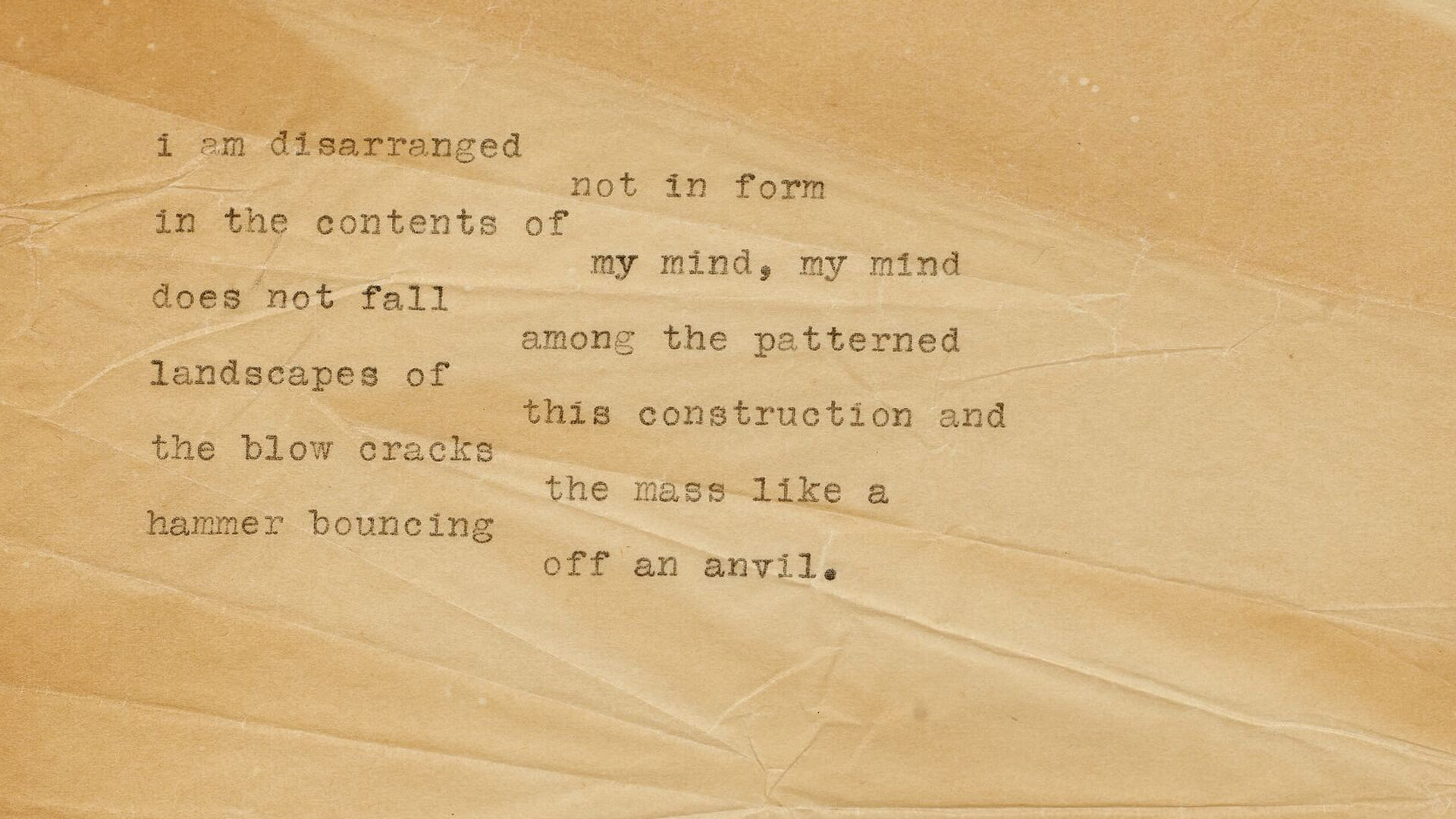
In the early 1980s, he gifted his poems from Black Mountain College to the curator and author Julie Sylvester, who was in the process of conducting interviews for a catalogue raisonné of Chamberlain’s works. He had saved them for nearly 30 years, and she recognized in this a sign of their singular importance for him, and the insights they might afford for his work. The pages reveal his working through the images and themes, as well as his and others’ changes and annotations.
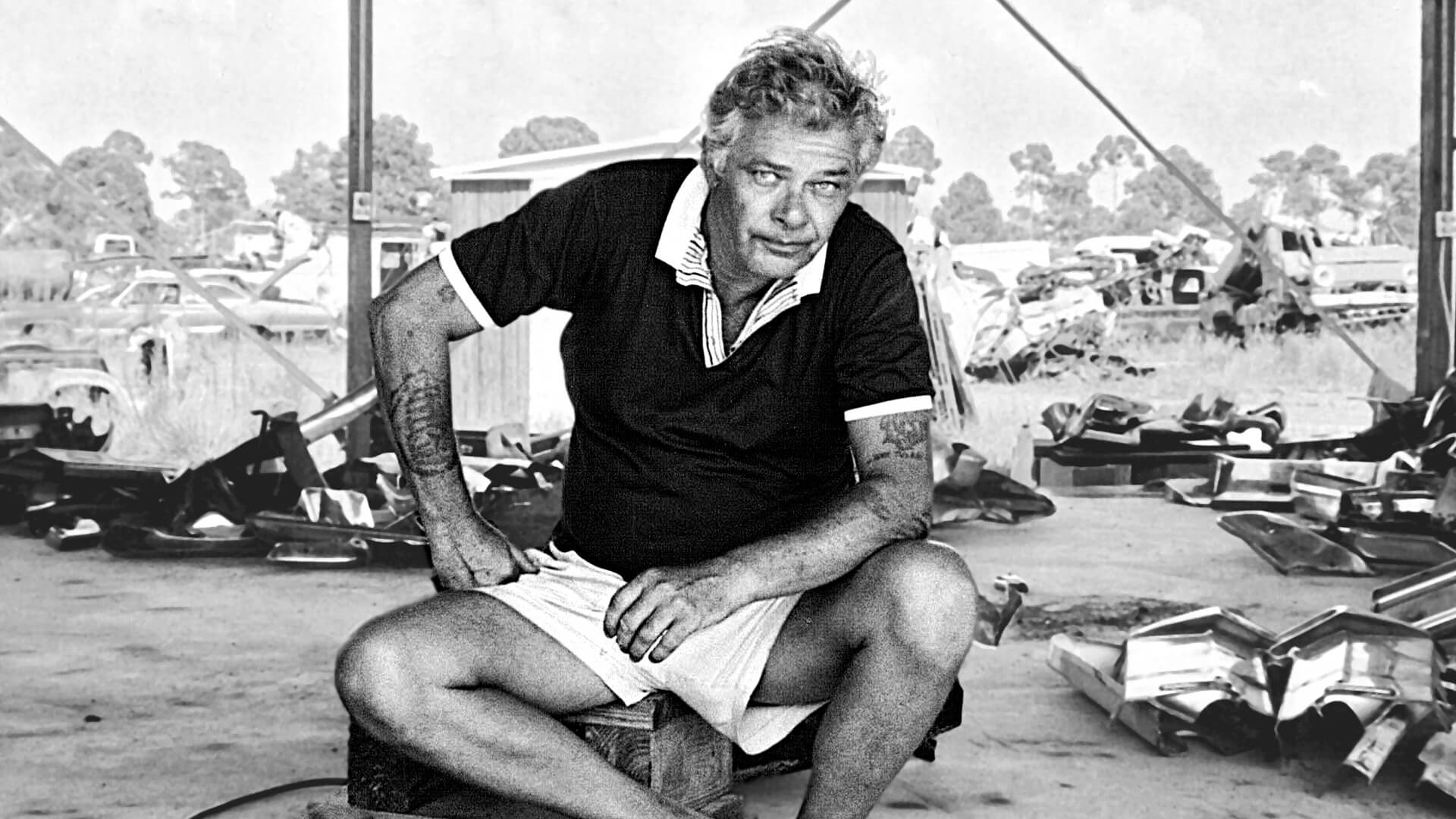
In 1980, Chamberlain had moved to Sarasota, mooring his boat, the Cocola, at a local marina. He established an outdoor studio at the back of a junkyard in Osprey, eventually occupying a large former industrial building painted bright yellow, allowing him to make work larger than ever before. The artist soon began work on a monumental sculpture commission, ‘Deliquescence,’ made from truck parts. Seeing the remaining truck chassis nestled together in his studio, he was reminded of a fleet of Venetian gondolas and probably also inspired by the proximity of the sea, the vessels in the marina and along the coastline. These hefty parts became the basis of the Armada series. In 1984, Chamberlain changed the series title to the Gondolas, naming each after a notable poet—including Charles Olson, his teacher at Black Mountain College.

By the end of 1984, and in direct contrast to the large scale of the Gondolas, the artist accumulated what he called a ‘Tonka Toy junkyard’ from which he made some of his smallest works. Many of the Tonks, however, share a focus on low, horizontal form with the Gondolas. Seeing these works together demonstrates Chamberlain’s ability to work in a variety of scale—simultaneously creating some of his largest and smallest works. The opportunity to see the Tonks and Gondolas in parallel gives a unique insight into Chamberlain’s Sarasota era, a key period in the artist’s oeuvre.
Organized in close collaboration with the John Chamberlain Estate, the exhibition is curated by Tanya Barson.
Also on view in Monaco: NAUGHTYNIGHTCAP
Alongside the artist’s exhibition, a monumental public sculpture by John Chamberlain, ‘NAUGHTYNIGHTCAP’ (2008), is installed in the gardens adjacent to our Monaco gallery.
John Chamberlain, NAUGHTYNIGHTCAP (2008), Hauser & Wirth Monaco, 2023 © 2023 Fairweather & Fairweather LTD / Artists Rights Society (ARS), New York. Photo: Nicolas Brasseur
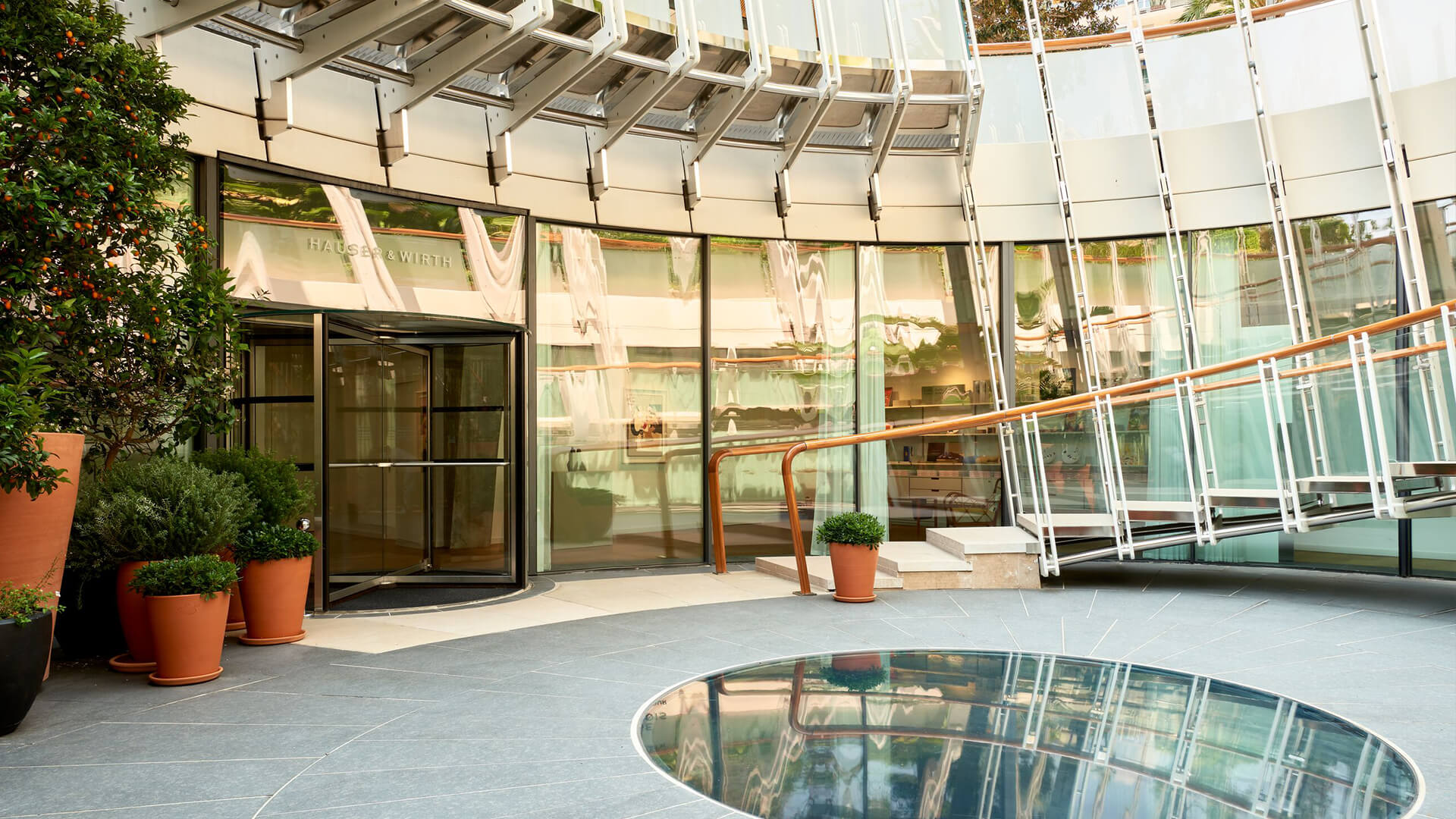
On view in Monaco
The gallery is open Tue – Sat, 10 am – 6 pm
Please visit our location page to plan your visit
All artwork images © 2023 Fairweather & Fairweather LTD / Artists Rights Society (ARS), New York
About the Artist
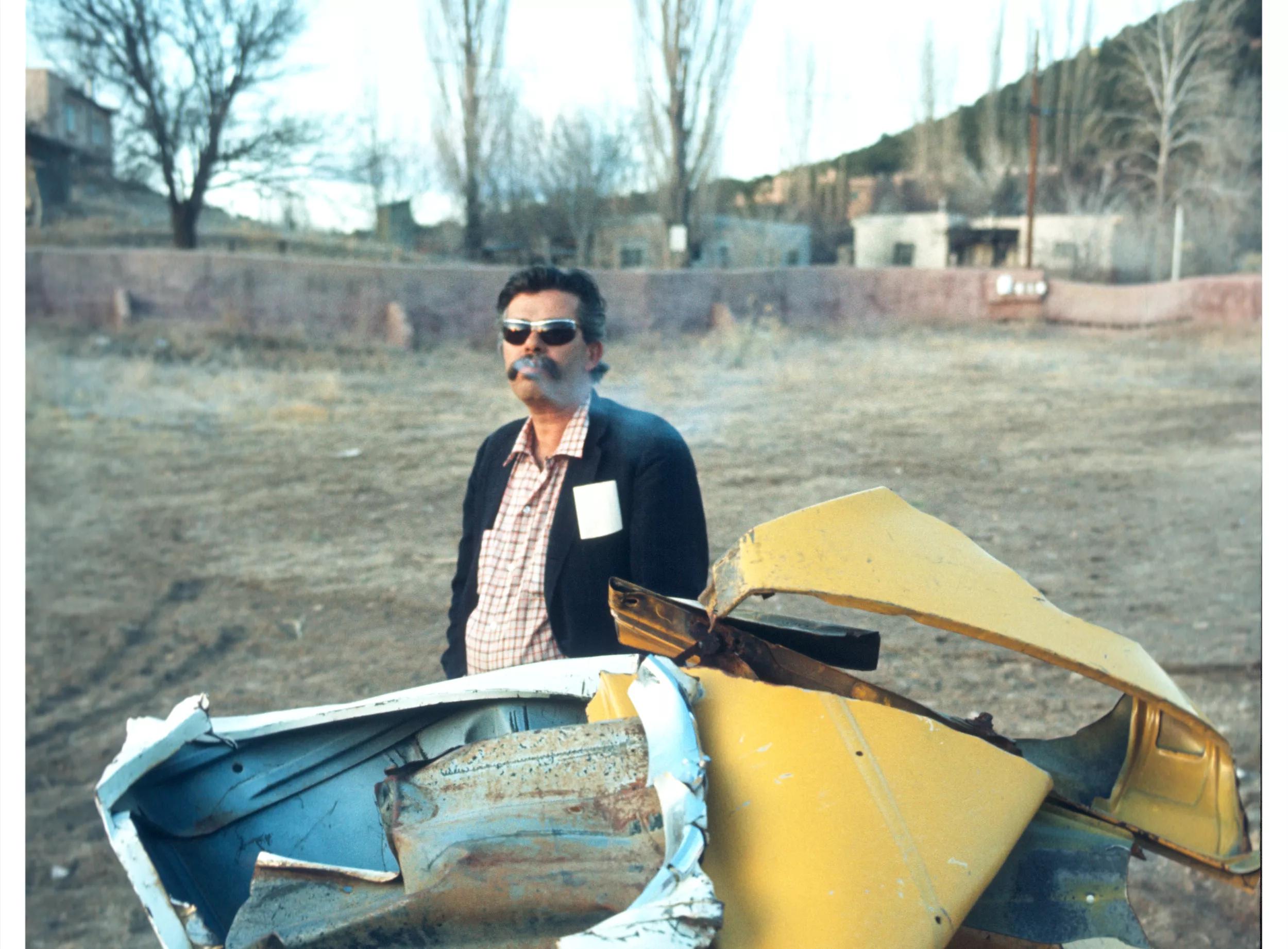
John Chamberlain
John Chamberlain (1927 – 2011) was a quintessentially American artist, channeling the innovative power of the postwar years into a relentlessly inventive practice spanning six decades. He first achieved renown for sculptures made in the late 1950s through 1960s from automobile parts—these were path-breaking works that effectively transformed the gestural energy of Abstract Expressionist painting into three dimensions. Ranging in scale from miniature to monumental, Chamberlain’s compositions of twisted, crushed, and forged metal also bridged the divide between Process Art and Minimalism, drawing tenets of both into a new kinship. These singular works established him as one of the first American artists to determine color as a natural component of abstract sculpture. From the late 1960s until the end of his life, Chamberlain harnessed the expressive potential of an astonishing array of materials, which varied from Plexiglas, resin, and paint, to foam, aluminum foil, and paper bags.
After spending three years in the United States Navy during World War II, Chamberlain enrolled in the Art Institute of Chicago and Black Mountain College, where he developed the critical underpinnings of his work. Chamberlain lived and worked in many parts of the United States, moving between New York City, Long Island, Los Angeles, Santa Fe, Connecticut, and Sarasota, before finally settling on Shelter Island. In many ways, each location provoked a distinct material sensibility, often defined by the availability of that material or the limitations of physical space. In New York City, Chamberlain pulled scrap metal and twelve-inch acoustic tiles from the ceiling of his studio apartment. He chose urethane in Los Angeles in 1965 (a material he had been considering for many years), and film in Mexico in 1968. He eventually returned to metal in 1972, and, in Sarasota, he expanded the scale of his works to make his iconic Gondolas (1981 – 1982). The movement of the artist and the subsequent evolution of the work is indicative not only of a kind of American restlessness but also of Chamberlain’s own personal evolution: he sometimes described his use of automobile materials as sculptural self-portraits, infused with balance and rhythm characteristic of the artist himself.
Chamberlain refused to separate color from his practice, saying, ‘I never thought of sculpture without color. Do you see anything around that has no color? Do you live in a world with no color?’. He both honored and assigned value to color in his practice—in his early sculptures color was not added, but composed from the preexisting palette of his chosen automobile parts. Chamberlain later began adding color to metal in 1974, dripping and spraying—and sometimes sandblasting—paint and lacquer onto his metal components prior to their integration. With his polyurethane foam works, color was a variable of light: ultraviolet rays or sunlight turned the material from white to amber. It was this profound visual effect that brought the artist’s personal Abstract Expressionist hand into industrial three-dimensional sculpture. Chamberlain moved seamlessly through scale and volume, creating material explorations in monumental, heavy-gauge painted aluminum foil in the 1970s, and later in the 1980s and 1990s, miniatures in colorful aluminum foil and chromium painted steel.
Central to Chamberlain’s works is the notion that sculpture denotes a great deal of weight and physicality, disrupting whatever space it occupies. In the Barges series (1971 – 1983) he made immense foam couches, inviting spectators to lounge upon the cushioned landscape. At the end of his career, Chamberlain shifted his practice outdoors, and through a series of determined experiments, finally created brilliant, candy-colored sculptures in twisted aluminum foil. In 2012, four of these sculptures were shown outside the Seagram Building in New York, accompanied by playful titles such as ‘PINEAPPLESURPRISE’ (2010) and ‘MERMAIDSMISCHIEF’ (2009). These final works exemplify Chamberlain’s lifelong dedication to change—of his materials, of his practice, and, consequently, of American Art.
Chamberlain has been the subject of numerous solo exhibitions, including two major Retrospectives at the Solomon R. Guggenheim Museum in New York NY in 2012 and 1971; ‘John Chamberlain, Squeezed and Tied. Foam and Paper Sculptures 1969-70,’ Dan Flavin Art Institute, Dia Center for the Arts, Bridgehampton NY (2007); ‘John Chamberlain. Foam Sculptures 1966–1981, Photographs 1989–2004,’ Chinati Foundation, Marfa TX (2005); ‘John Chamberlain. Current Work and Fond Memories, Sculptures and Photographs 1967–1995,’ Stedelijk Museum, Amsterdam, Netherlands (Traveling Exhibition) (1996); and ‘John Chamberlain. Sculpture, 1954–1985,’ Museum of Contemporary Art, Los Angeles CA (1986). Chamberlain’s sculptures are part of permanent exhibitions at the Chinati Foundation in Marfa TX and at Dia:Beacon in upstate New York. In 1964, Chamberlain represented the United States in the American Pavilion at the 32nd International Exhibition of the Venice Biennale. He received many awards during his life, including a Doctor of Fine Arts, honoris causa, from the College for Creative Studies, Detroit (2010); the Distinction in Sculpture Honor from the Sculpture Center, New York (1999); the Gold Medal from The National Arts Club Award, New York (1997); the Lifetime Achievement Award in Contemporary Sculpture by the International Sculpture Center, Washington D.C. (1993); and the Skowhegan Medal for Sculpture, New York NY (1993).
Inquire about available works by John Chamberlain
On view now through 2 September 2023 at Hauser & Wirth Monaco.
Current Exhibitions
1 / 11
